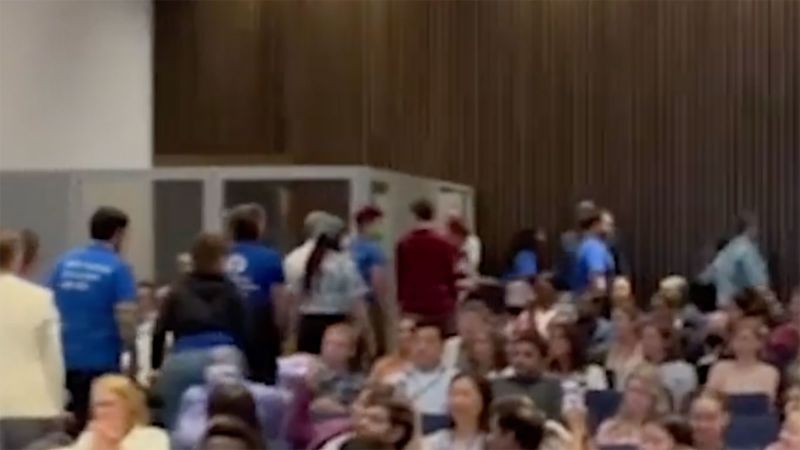In a recent town hall meeting held at the National Institutes of Health (NIH), Dr. Jay Bhattacharya, the Director, broached a sensitive topic — the origins of the Covid-19 pandemic. This discussion unfolded in an auditorium filled with NIH researchers and employees in Bethesda, Maryland, where both the atmosphere and consequences surrounding the conversation soon became palpable. Dr. Bhattacharya’s assertion that the pandemic could possibly stem from research conducted with limited safety protocols raised not only eyebrows but also prompted a subtle exodus of NIH staff in protest.
Dr. Bhattacharya, a former professor of health policy and economics at Stanford University, initiated this contentious subject stating, “It’s possible that the [Covid-19] pandemic was caused by research conducted by human beings,” which was subsequently met with an exodus of several staff members who stood up and walked out of the auditorium. His candid and seemingly controversial acknowledgment of the NIH’s potential partial sponsorship of beneficial yet risky research ignited a level of discomfort, which he tried to light-heartedly dismiss, saying, “It’s nice to have free speech.” However, the walkout, seen by many as a gentle form of protest, symbolized a larger frustration within the NIH walls.
The sentiment among the walking-out staff was partly rooted in their discontent over working conditions exacerbated during the Trump administration. Many of them expressed their intent to meet with Dr. Bhattacharya to discuss broader issues within the NIH, including difficulties obtaining vital materials and uncertainty surrounding their research due to budgetary cuts and overall chaos within the agency. Dr. Kaitlyn Hajdarovic, a postdoctoral researcher at the NIH, pointed out that union members felt sidelined from important discussions that could shape their working environment.
Moreover, the town hall conversation wasn’t limited to the alarmingly sensitive topic of pandemic origins. It also touched on the NIH’s approach to diversity, equity, and inclusion (DEI) policies, raising concerns about the previous administration’s cuts to research grants in these areas. There was an evident tension as Bhattacharya argued that certain NIH-supported research had veered away from being scientifically valid. The topic elicited pushback from the audience, indicating a friction between the administration’s perspective and the on-ground realities experienced by the staff.
BHattacharya’s comments, particularly on DEI research, triggered disagreement from attendees, resulting in a heated exchange over the scientific merit of studies addressing structural discrimination and health disparities. This altercation highlighted broader issues not only related to the pandemic but also the perceived ideological direction of the NIH under Bhattacharya’s administration.
As the meeting unfolded, Bhattacharya acknowledged the chaotic state of NIH following mass layoffs that occurred under the Department of Health and Human Services (HHS) Reduction in Force on April 1, which saw around 1,200 staff members dismissed. He voiced his own frustrations regarding a lack of transparency in these decisions, emphasizing his own inability to influence these critical operational changes when he assumed his leadership role.
Additionally, the meeting showcased other grievances such as the significant reduction in opportunities for scientists to innovate due to administrative restrictions. Suggestions made to ease the strict regulations governing employees’ work and the acknowledgment of a need for reinstating purchasing capabilities and travel were met with applause, signaling the staff’s yearning for a more supportive research environment.
However, reflecting on the events a week post-town hall, many union members still reported a lack of acknowledgment or follow-up from Dr. Bhattacharya’s office regarding their request for a meeting, demonstrating an ongoing disconnect between NIH leadership and its foundational researchers.
In summary, the town hall with NIH Director Dr. Jay Bhattacharya illuminated multiple layers of discontent within the organization, ranging from the deep and unresolved implications of the Covid-19 pandemic to pressing issues regarding operational changes affecting day-to-day scientific research. The event not only underscores the difficulty of navigating complex topics in the public health landscape but also highlights the critical need for open communication and collaborative problem-solving in any scientific establishment.



